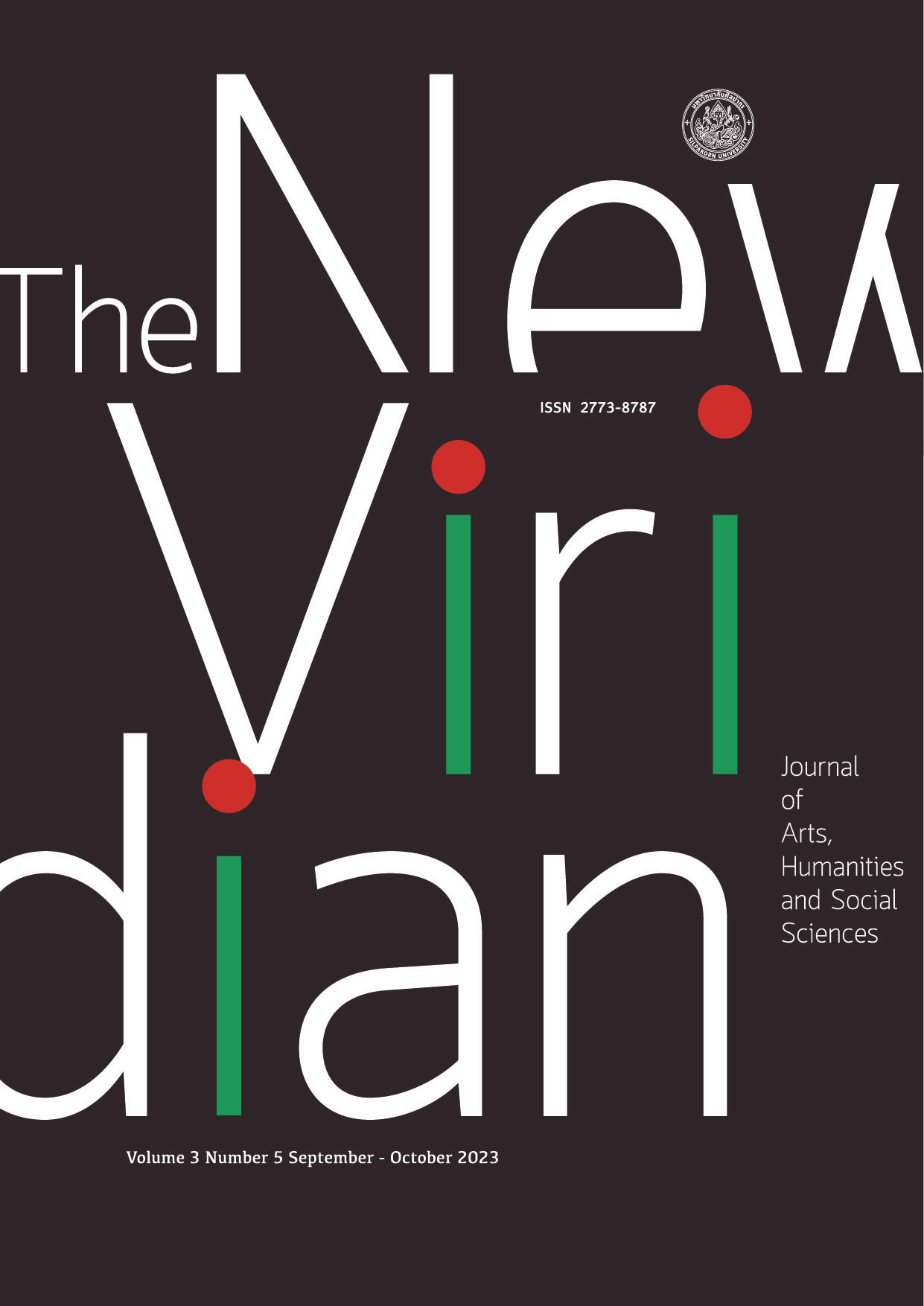กลยุทธ์การเขียนเชิงโต้ตอบ: แนวทางการส่งเสริมทักษะการเขียนสำหรับเด็ก (Interactive Writing Strategy: Guidelines for Promoting Writing Skills for Children)
Keywords:
Interactive writing strategy, Writing skillAbstract
Writing is one of the most important skills in 21st century and It's the skill that need to be developed in early years of school. Because the writing is the tools for learning and use in daily life to express thought knowledge and understanding of the world through written language. One of the approaches that used for teaching to promote writing skill is Interactive writing strategy. The step of the interactive writing strategy was consisting of step 1 Building language experience, step 2 Planning writing, step 3 switching the role as the author, step 4 reading to review the text and step 5 summarizing learning. Activity can be organized for both small groups and whole class. During the activity, teacher has the important roles to scaffolding the children. Moreover, the teacher has to organize classroom environment, material and language printed media to enhance successful implementation of interactive writing strategies.
References
Button, K., Johnson, M. J., & Furgerson, P. (1996). Interactive Writing in a Primary Classroom. The Reading Teacher, 49(6): 446-454.
Chewapun, Achara. (2018). Creative Writing Activities in Elementary Classroom (กิจกรรมการเขียนสร้างสรรค์ในชั้นประถมศึกษา). Bangkok: Chulalongkorn University Press.
Cremin, T., & Burnett, C. (Eds.). (2018). Learning to Teach in the Primary School (4th ed.). Abingdon, Oxon: Routledge.
Department of Education, State Goverment of Victoria, Australia. (2018). Literacy Teaching Toolkit: Interactive Writing. [Online]. Retrieved April 2, 2023 from https://www.education.vic.gov.au/school/teachers/teachingresources/discipline/english/literacy/writing/Pages/teachingpracinteractive.aspx
Fresch, M. J. (2016). Strategies for Effective Balanced Literacy. California: Shell Education.
Gillespie, A., & Graham, S. (2014). Hotsheet 5: Effective Practices for Written Expression. [Online]. Retrieved October 25, 2022 from https://s3.amazonaws.com/cmi-teaching-ld/hot_sheets/10/uploaded_files/original_DLD_HotSheet5.pdf?1405330157
Hancock, M. R. (2006). Language Arts: Extending the Possibilities. New Jersey: Pearson Merrill Prentice Hall.
Jalongo, M. R. (2013). Early Childhood Language Arts (6th ed.). Boston: Allyn and Bacon.
Mackenzie, N. M. (2015). Interactive Writing: A Powerful Teaching Strategy. Practical Literacy: The Early and Primary Years, 20(3): 36-38.
McCarrier, A., Pinnell, G. S., & Fountas, I. C. (2000). Interactive Writing: How Language & Literacy Come Together, K-2. Portsmouth, New Hampshire: Heinemann.
Neumann, M. M., Hood, M., Ford, R. M., & Neumann, D. L. (2012). The Role of Environmental Print in Emergent Literacy. Journal of Early Childhood Literacy, 12(3): 231-258.
Office of the Education Council, Ministry of Education. (2017). The National Education Plan B.E. 2560-2579 (แผนการศึกษาแห่งชาติ พ.ศ. 2560-2579). Bangkok: Prikwarn Graphic.
Roth, K., & Dabrowski, J. (2014). Extending Interactive Writing Into Grades 2-5. The Reading Teacher, 68(1): 33-44.
Tompkins, G. E. (2018). Literacy for the 21st Century: A Balanced Approach (7th ed.). Boston: Pearson.
Williams, C. (2018). Learning to Write with Interactive Writing Instruction. The Reading Teacher, 71(5): 523-532.
Williams, C., & Pilonieta, P. (2012). Using Interactive Writing Instruction with Kindergarten and First-Grade English Language Learners. Early Childhood Education Journal, 40(3): 145-150.
Weinstein, C. S., & Romano, M. E. (2014). Elementary Classroom Management: Lessons from Research and Practice (6th ed.). New York: McGraw-Hill Education.


